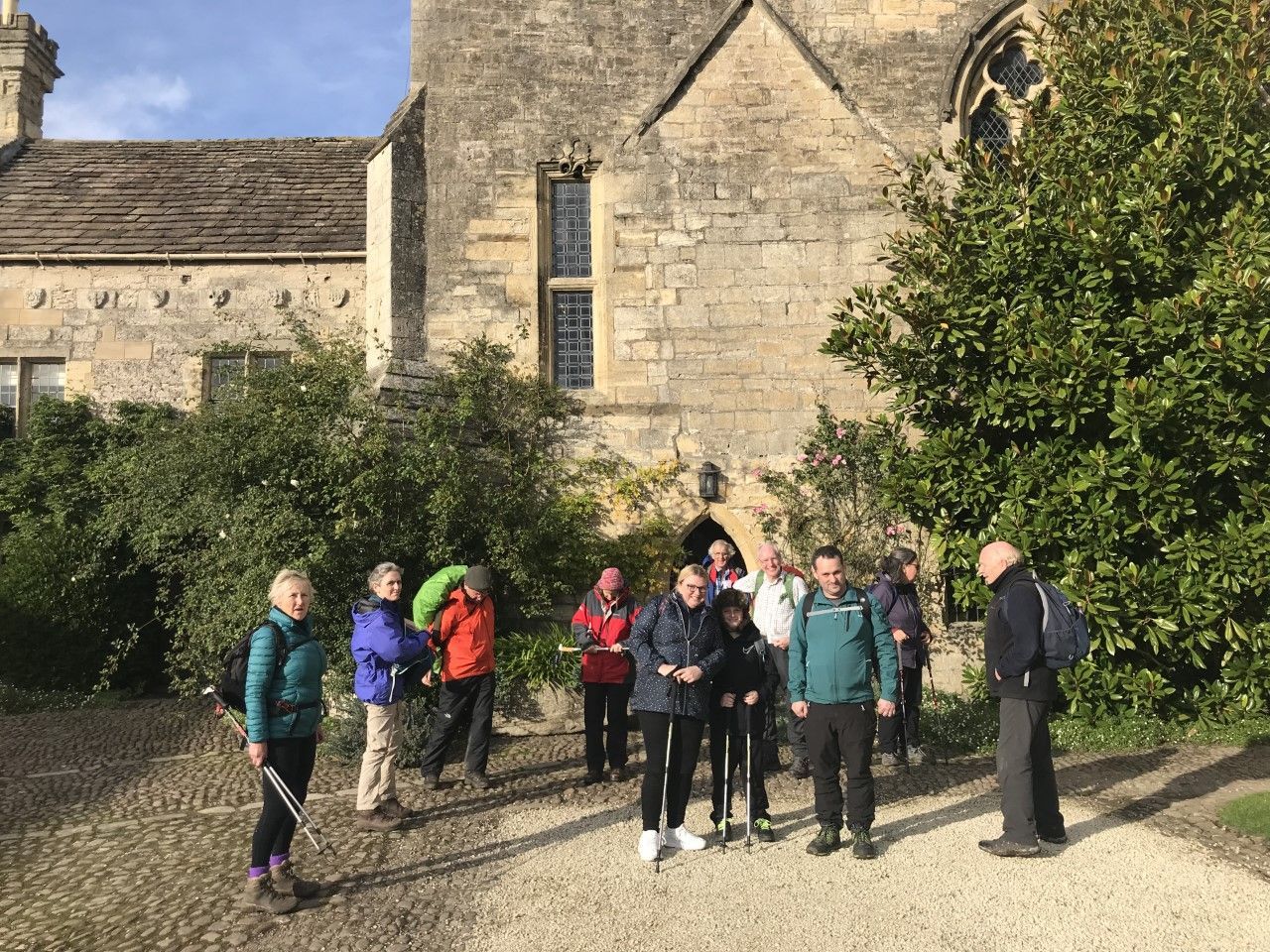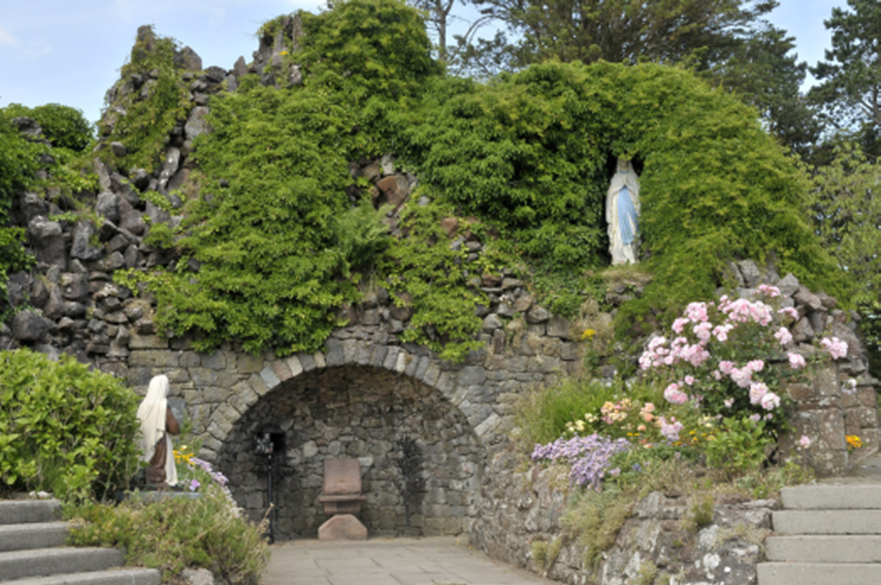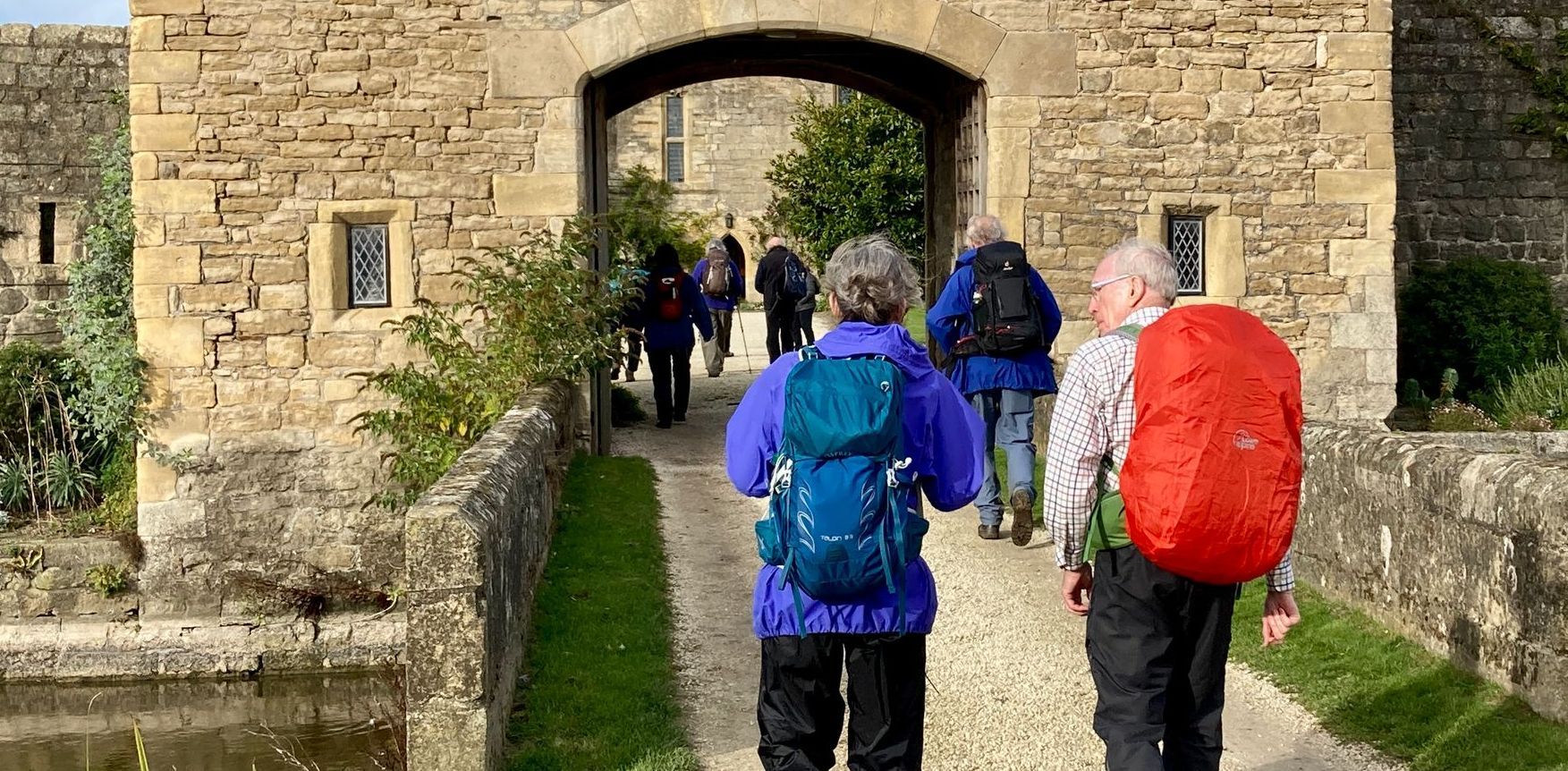St Mary's Way
A Pilgrim Way for the Diocese of Lancaster from the Cathedral of St Peter in Lancaster to the Shrine of Our Lady of Lourdes at Cleator

Photograph by Benedict Robinson
About the route
The Ways ends at the Grotto of Our Lady of Lourdes in Cleator. The Grotto was built in 1927 as a shrine to Our Lady with stone from the local mine pit banks to represent the Grotto at Lourdes. It became a place of pilgrimage for people from Lancashire and Cumbria and was dedicated by Cardinal Basil Hume in 1980.
The walk was first completed over the summer of 2018 by Peter, Benedict, Jacob and Tony Robinson. All the photographs on this website relating to the Way were taken by Benedict Robinson. The pilgrimage was made possible by Keely Robinson who supported the walk and drove everyone to and from each stage. The Hearts in Search of God project is grateful to the Robinson family for generously making the pilgrimage available on this website and for allowing us to use the photographs and make the route booklet available.
This magnificent pilgrimage walk links the Catholic Cathedral of St Peter in Lancaster with the shrine to Our Lady at Cleator. The 67 mile route takes in quiet canal side paths, the wide open views of Morecambe Bay, England's longest lake and a climb in the shadow of Lakeland’s highest mountains, finishing at the peaceful grotto built in honour of Our Lady of Lourdes in West Cumbria.
The complete route runs from Lancaster to Arnside, Grange-Over-Sands to Lakeside at Windermere, along the west side of Windermere to Elterwater then over to Rosthwaite then to Ennerdale Bridge and finally to Cleator. The route follows a number of well-established long distance walks including the Lancashire Coastal Way, the Windermere Way, the Cumbria Way and the Coast to Coast Walk.
You can find out more about the Way and download the GPX file by clicking on the LEARN MORE tab in the
interactive map below
NB although the mileage is shown as 74.6 on the map below this includes the railway journey from
Arnside to Grange Over Sands. The actual walking distance is 67 miles.
Guidance
Using the tabs in this section you can find the information you need for tour pilgrimage.
The Outer Way has the stages of the Way and public transport links.
The Inner Way describes the spiritual highlights. You can download the overview of the Way and these notes using the button.
Use the button below to download Peter Robinson's booklet on the St Mary's Way, which includes full directions and maps.
Way Guidance
Stages:
Day 1 - Lancaster to Arnside: 15 miles
Day 2 - Grange over Sands to Lakeside: 9 miles
Day 3 - Lakeside to Elterwater: 15 miles
Day 4 - Elterwater to Rosthwaite: 10 miles
Day 5 - Rosthwaite to Ennerdale Bridge: 13 miles
Day 6 - Ennerdale Bridge to Cleator: 5 miles
Public transport links
Trains:
https://www.nationalrail.co.uk/
Buses:
https://www.lakedistrictonboard.com/transport/lake-district-buses/
Pilgrim Places
The Cathedral of St Peter, Lancaster
Lawful Catholic worship in Lancaster started with the building of a chapel (now the Palatine Hall) in Dalton Square in 1799. By 1847 this chapel had become too small for the growing congregation, and a three-acre plot was bought at Greenfield. The school, convent and cemetery were built first. The new church was consecrated and dedicated in 1859. It is a fine building of warm buff stone with a tall steeple. The interior is light and impressively proportioned. In 1924 the Liverpool diocese was divided, and St Peter’s became the Cathedral for the new Diocese of Lancaster.
The Priory was founded in 1190 by William Marshal, 1st Earl of Pembroke, as a community of the Augustinian Canons and was dedicated to Saint Mary the Virgin and Saint Michael. The gatehouse, which apart from the church itself is the only surviving structure of the medieval priory, was built between 1330 and 1340.
At the Dissolution of the Monasteries in 1536 the priory was surrendered by its then community of ten canons, but as part of the Pilgrimage of Grace the community was reinstated, one of perhaps 16 such cases. The prior, Richard Preston, who had not thrown his lot in with resistance and had fled to the Crown forces, was rewarded with a parochial living to supplement his Crown pension. Others had a different fate. After the failure of the rising the subprior and several of the canons were hanged, along with ten villagers who had supported them.
The Dissolution commissioners had instructions to pull down the priory and sell the materials for the profit of the Crown. This would have meant the Priory's church being demolished but the founder William Marshal had given an altar within the church to the village. The villagers petitioned to be allowed to keep the church as it was their only place of worship, and this was granted.
During the 19th Century the Church was restored in a way which has been described as "more enthusiastic than sympathetic". Today the Church is an Anglican parish church, and the National Trust owns the Priory Gatehouse.
The Anglican Church of St Andrew, Stonethwaite
A chapel on this site is recorded in 1505 but the current Church was built as a chapel of ease and consecrated in 1687. It fell into ruin but was rebuilt in 1762. In 1765 it was granted a burial ground to relieve parishioners of the 'great inconvenience, labour and expense' of carrying the dead to Crosthwaite. The church was restored in 1824-25 and again in 1873 when a chancel was added. It is a peaceful rural church closely sitting in one of the most picturesque areas of the country.
The Catholic Church of St Mary & Shrine of Our Lady of Lourdes, Cleator Moor
Cleator boomed as a mining town in the nineteenth century, bringing many Irish workers. A Benedictine mission was established in 1853. A stone church was built with seating for 600. This building later became part of St Mary’s School when the present church was built in the 1870s. It is a good example of an E. W. Pugin church and retains much of its original character and furnishings. It was reordered in the 1970s. The Grotto was built in 1927, when international travel was difficult for most people, as a shrine to Our Lady. It was built with stone from the local mine pit banks and made to represent the Grotto at Lourdes. It became a place of pilgrimage for people from Lancashire and Cumbria and was dedicated by Cardinal Basil Hume in 1980.
ABOUT THE DIOCESE OF LANCASTER
The Diocese was established in 1924, taking areas and parishes from the Archdiocese of Liverpool and the Diocese of Hexham and Newcastle. It extends along the west of England from the Ribble River in the south of Preston to the Scottish border, comprising the counties of Cumbria and much of Lancashire. The diocese has around 90 active priests, 50 permanent deacons, 12 secondary schools, over a hundred primary schools and a similar number of parishes.
Areas in the diocese include the city of Preston; a city with a high Catholic population due in part to the fact that the Protestant Reformation never took hold in Preston to the same extent as it did in other places.





